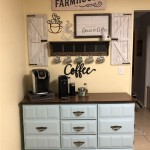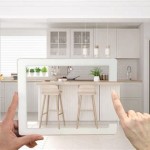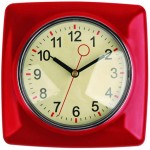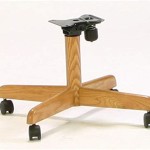How To Paint a Kitchen Table and Chairs Without Sanding
Revitalizing a kitchen table and chairs through painting offers a cost-effective and relatively straightforward method of updating the aesthetic of a dining space. While traditional painting typically involves sanding to ensure proper paint adhesion, it is possible to achieve a durable and visually appealing finish without this step. This process requires meticulous preparation and the utilization of appropriate materials specifically designed for no-sand applications.
The success of painting kitchen furniture without sanding hinges on thorough cleaning, degreasing, and the use of a bonding primer. Neglecting any of these stages can result in paint chipping, peeling, or an uneven finish. Careful selection of paint formulated for durability and ease of application is also paramount. This article outlines the necessary steps and considerations for effectively painting a kitchen table and chairs without the need for sanding.
Key Point 1: Thorough Cleaning and Degreasing
The initial and arguably most crucial step in painting kitchen furniture without sanding is comprehensive cleaning. Kitchen surfaces are typically exposed to grease, food residue, and everyday grime, all of which can impede paint adhesion. The type of cleaner used will depend on the nature and severity of the surface contamination.
For general cleaning, a solution of warm water and mild dish soap is often sufficient. However, for more stubborn grease stains, a dedicated degreasing cleaner is recommended. Products specifically formulated for kitchen use are widely available in hardware and home improvement stores. When selecting a degreaser, it is important to choose one that is safe for the material of the furniture being painted. Testing the cleaner on an inconspicuous area first is advisable to ensure it doesn't damage the existing finish.
The cleaning process involves applying the cleaner to the entire surface of the table and chairs, paying particular attention to corners, edges, and areas prone to grease accumulation. A scrub brush or sponge can be used to dislodge stubborn dirt. After cleaning, the surfaces should be thoroughly rinsed with clean water to remove any remaining cleaner residue. Allowing the furniture to dry completely is critical before proceeding to the next step. This may involve using a clean, dry cloth or allowing the furniture to air dry for several hours, depending on humidity levels.
In some cases, a second cleaning may be necessary, especially if the furniture has a heavy buildup of grease or grime. Repeating the cleaning process ensures that the surface is as clean as possible, maximizing the likelihood of successful paint adhesion. The goal is to create a pristine surface free of any contaminants that could compromise the finish. The extra effort invested in this stage will pay dividends in the long run, resulting in a more durable and aesthetically pleasing painted surface.
Beyond soap and water, consider using trisodium phosphate (TSP) for exceptionally greasy surfaces. TSP is a powerful cleaner, but it requires careful handling and adherence to safety precautions, including wearing gloves and eye protection. It is also important to rinse thoroughly after using TSP, as any remaining residue can interfere with paint adhesion. Alternatives to TSP are available that are less harsh but still effective at degreasing.
Key Point 2: Applying a Bonding Primer
Once the kitchen table and chairs are thoroughly cleaned and dried, the next critical step is the application of a bonding primer. This primer is specifically formulated to adhere to slick or non-porous surfaces without the need for sanding. It acts as an intermediary layer, creating a strong bond between the existing finish and the new paint. The choice of bonding primer is crucial for the success of a no-sand painting project.
Several types of bonding primers are available, each with its own set of characteristics and benefits. Look for primers that explicitly state they are designed for use on glossy surfaces or that they promote adhesion without sanding. Acrylic-latex primers are commonly used and offer good adhesion, durability, and ease of application. Oil-based primers are another option, providing excellent adhesion but requiring mineral spirits for cleanup. Newer water-based bonding primers offer low VOCs (volatile organic compounds) and are preferred by some for their environmental friendliness and easier cleanup.
Before applying the primer, ensure the furniture is in a well-ventilated area. Use painter's tape to protect any surfaces that are not intended to be painted, such as chair seats if they are upholstered. Stir the primer thoroughly to ensure it is properly mixed. Apply the primer in thin, even coats using a brush, roller, or spray gun, depending on the size and complexity of the furniture. A brush is often preferred for detailed areas and corners, while a roller can be used for larger, flat surfaces. A spray gun offers the most even and professional-looking finish but requires practice and proper ventilation.
Allow the primer to dry completely according to the manufacturer's instructions. This drying time is crucial for the primer to properly bond to the surface and create a stable base for the paint. Applying paint before the primer is fully dry can compromise adhesion and lead to problems later. In some cases, a second coat of primer may be necessary, especially if the existing finish is very dark or glossy. If applying a second coat, allow the first coat to dry completely before applying the second.
After the primer has dried, inspect the surface for any imperfections, such as drips or runs. These can be lightly sanded down, if necessary, using fine-grit sandpaper. However, avoid aggressive sanding, as the goal is to minimize sanding as much as possible. Wipe away any sanding dust with a tack cloth before proceeding to painting.
Key Point 3: Selecting and Applying the Paint
The final step in painting kitchen furniture without sanding is selecting and applying the paint. Choosing the right type of paint is essential for achieving a durable, attractive, and long-lasting finish. Consider factors such as durability, cleanability, sheen, and color when making your selection. Paint specifically designed for furniture or cabinets is generally recommended for its ability to withstand wear and tear.
Acrylic-latex paints are a popular choice for kitchen furniture due to their durability, ease of application, and low VOC content. These paints are available in a wide range of colors and sheens. Oil-based paints offer excellent durability and a smooth finish but require mineral spirits for cleanup and have a higher VOC content. Chalk paints are also an option, providing a matte finish and often requiring a sealant or wax for added protection. Milk paints offer a similar look to chalk paint but are made from all-natural ingredients.
When selecting a sheen, consider the desired aesthetic and the level of durability required. Semi-gloss and gloss sheens are highly durable and easy to clean, making them suitable for kitchen furniture that is frequently used. Satin and eggshell sheens offer a softer look but are less durable. Matte sheens are the least durable and are best suited for furniture that is not subject to frequent use or cleaning.
Before applying the paint, ensure the furniture is in a well-ventilated area and that all surfaces are clean and dry. Stir the paint thoroughly to ensure it is properly mixed. Apply the paint in thin, even coats using a brush, roller, or spray gun, depending on the size and complexity of the furniture. As with the primer, a brush is often preferred for detailed areas and corners, while a roller can be used for larger, flat surfaces. A spray gun offers the most even and professional-looking finish but requires practice and proper ventilation.
Allow each coat of paint to dry completely according to the manufacturer's instructions before applying the next coat. Applying paint before the previous coat is fully dry can result in drips, runs, and an uneven finish. Typically, two to three coats of paint are required to achieve full coverage and a durable finish. Lightly sanding between coats with fine-grit sandpaper can help to create a smoother surface, but it is not always necessary.
After the final coat of paint has dried, allow the furniture to cure completely, according to the manufacturer's instructions. This curing time is crucial for the paint to harden and achieve its maximum durability. Avoid using the furniture during the curing period to prevent scratching or damaging the finish.
For added protection, consider applying a clear topcoat over the painted surface. This topcoat can be a polyurethane, varnish, or acrylic sealant, depending on the type of paint used and the desired level of durability. A topcoat can help to protect the paint from scratches, stains, and moisture, extending the life of the painted finish. Apply the topcoat in thin, even coats, following the manufacturer's instructions. Allow the topcoat to dry and cure completely before using the furniture.

The Best Way To Paint A Dining Table And Chairs Confessions Of Serial Do It Yourselfer

How I Chalk Painted My Kitchen Table Without Sanding Two Paws Farmhouse

The Best Way To Paint A Dining Table And Chairs Confessions Of Serial Do It Yourselfer

How To Paint Dining Chairs Get Professional Results The Homes I Have Made

How To Paint Wood Furniture Without Sanding In 2024 Grace My Space

How To Easily Paint Furniture Without Sanding The Secret A Smooth Job

How To Paint Wood Furniture Without Sanding In 2024 Grace My Space

Painting A Table Without Sanding Dining Makeover

Best Paint For Furniture Without Sanding

How To Refinish A Dining Table Without Stripping The Original Coat
Related Posts








